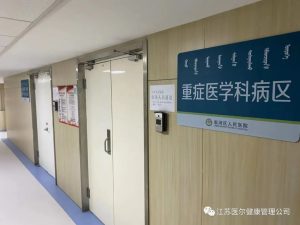01
Introduction
TITTLES
The hospital is a shelter, a sacred place where diseases can be cured and pain can be relieved. It opens its doors to welcome a steady stream of patients, but what we cannot see is the germs carried by these patients, which are like latent enemies. Without effective protective measures, the hospital may become a gathering and breeding ground for germs.
Control and prevention of hospital infection

Preventing Nosocomial Infections
"Nosocomial infection", a key word in epidemiology, is gaining increasing attention. Hospitals are densely populated environments where patients and medical staff come into contact with each other. This greatly increases the chances of pathogen transmission. Infection control is especially difficult in busy areas such as emergency rooms, operating rooms, and intensive care units. The spread of pathogens threatens the life and safety of every medical worker and patient. Especially for those patients with weak bodies and low immunity, the danger of this infection is self-evident. In addition, the increasing drug resistance of pathogens has made the problem of "nosocomial infection" more serious.
In order to effectively control hospital-acquired infections, decisive measures must be taken to cut off the chain of infection. First, infectious patients must be isolated. For patients who are already infected or contagious, appropriate isolation measures must be taken to prevent the spread of pathogens. Secondly, hospital spaces and items must be disinfected regularly, such as indoor air, medical equipment, beds, bed sheets, clothing, etc. In addition, it is also crucial to strengthen air filtration and ventilation to keep indoor air fresh and clean.
picture
The meaning of air disinfection
At present, the air quality in most hospitals in my country is not optimistic. Although there are clear disinfection standards and microbial contamination requirements, the air quality in many hospitals still does not meet the standards. This not only threatens the life safety of patients, but also affects the physical and mental health of medical workers. Therefore, we must strengthen the research and application of air disinfection measures to create a safer and cleaner environment for hospitals.
picture
Disinfection technology
Currently, commonly used air disinfection methods in hospitals include the use of air fresheners, negative ion generators, and ultraviolet sterilization. Each of these methods has advantages and disadvantages and needs to be selected and applied according to the actual situation. For example, although air fresheners are relatively low-cost, their bacterial removal rate is not high; although negative ion generators can inhibit the growth of bacteria and viruses, their sterilization rate is low; although ultraviolet sterilization is effective, excessive ultraviolet rays Irradiation will cause harm to the human body, and it is not appropriate to have personnel on site for ultraviolet disinfection.
In contrast, atomized hydrogen peroxide disinfection shows obvious advantages. Atomized hydrogen peroxide disinfection can complete the disinfection of air and the surface of equipment and facilities. It is easy to control the concentration and time of the disinfectant during the disinfection process. It also has a good killing effect on various bacteria, spores, etc., and after disinfection, gaseous hydrogen peroxide will decompose into water and oxygen, without secondary pollution, no residue, and excellent compatibility with materials. Therefore, it can become the main disinfection method to effectively curb nosocomial infections.
Picture
Features of YE-5F Hydrogen Peroxide Composite Factor Disinfection Machine
Combining the advantages of atomized hydrogen peroxide disinfection technology, the YE-5F Hydrogen Peroxide Composite Factor Disinfection Machine came into being. With its unique spatial disinfection technology advantages, it can be widely used in various departments in the hospital. The five disinfection factors are combined for disinfection, which improves the effect of nosocomial infection control.
1) Nano-scale atomized particles, no residue, good sterilization effect, good material compatibility;
2) Safe and harmless, certified by multiple authoritative organizations, with complete verification data;
3) High space sterilization efficiency, easy operation, digital disinfection;
4) Multi-functional configuration options, suitable for different scenarios, no harm to the human body;
5) Combination of active and passive disinfection methods, suitable for various complex situations.
6) Filtration adsorption system to sustainably purify the air